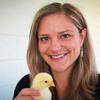Explore all the information on
Poultry egg quality
Egg quality defines those characteristics of an egg that affect consumer acceptability and preference. Components of quality include shell quality and interior egg quality for shell eggs, and interior egg quality for further processed eggs. The quality of the egg once it is laid cannot be improved. Hence, its maintenance is mostly a preventive process. Egg quality is influenced by several factors including rearing, temperature, humidity, handling, storage, and egg age. Shell quality: There are five major classes of shell defects: integrity, texture, shape, color, and cleanliness. Internal egg quality involves functional, aesthetic and microbiological properties of the egg yolk and albumen. The proportions of components for fresh egg are 32% yolk, 58% albumen and 10% shell. Regarding exterior egg quality, the shell of each egg should be smooth, clean and free of cracks. The eggs should be uniform in colour, size and shape.
How does heat stress in poultry impact overall performance, productivity, and the quality of meat or eggs? Andras Palla, Regional Technical Manager-Poultry at Trouw Nutrition Asia Pacific responds this question
...
Comments : 0
Recommendations: 1
Introduction In poultry production systems, feed represents between 70 and 80 % of production costs; energy, protein, and amino acids are limiting factors that significantly affect the poultry industry’s feed costs and performance (Cancherini et al., 2005). The availability of the synthetic amino acids methionine and lysine in poultry feeds allowed lower protein levels since these amino acids limit portions for chickens and hens (Ramírez & Gonzalez,...
Comments : 0
Recommendations: 0


Prices Hold, Pressures Build: What’s Moving the Veterinary API Market
Suggested link
International Poultry Welfare Alliance (IPWA) and US-Roundtable for Sustainable Poultry & Eggs (US-RSPE) are pleased to announce the results of its recent board of director elections.
The US-RSPE is an independent, multi-stakeholder organization with members representing growers,...
Comments : 0
Recommendations: 0
Our Technical Manager for Poultry, Andras Palla, discusses the effect of heat stress in poultry especially in laying hens. Understand how heat stress affects egg production and how to mitigate the effect of temperature related issues in the farm....
Comments : 0
Recommendations: 2


Mycotoxin Testing in the Feed Chain: A Risk Prevention Strategy for Raw Material Suppliers, Grain Storage Facilities and Processors, and Feed Manufacturers
Suggested link
Introduction With increasing age not only the absolute thickness of the eggshell declines, also a long-lasting stress exposure during weeks of high laying rates will affect formation of matrix proteins resulting in an increased egg shell breaking rate as well as in decreased performance. Both points are of economic relevance and appears to be a limiting factor in the prolonged and, thus, sustainable use of laying hens. Hypothesis The wood-derived feed...
Comments : 3
Recommendations: 2
The issue of antibiotics resistance on animals has raised concerns about meat safety and human health. The banning of antibiotics- growth promoter in animal feed was announced in the EU in 2006. Other countries are starting to follow the regulation to comply with the compulsory withdrawal periods to ensure ‘antibiotics free products. Supplementation in nutrients to enhance the immunity system and lower the risk of the pathogen can help to reach the balance between maintaining animal...
Comments : 4
Recommendations: 0
Genetic progress in laying hens has never been so clearly visible in the field throughout the past decades. Modern selection methods, such as genomics and fully automated measurements, as well as massive investment in the expansion of our R&D programme have...
Comments : 4
Recommendations: 2
INTRODUCTION Feed cost accounts for approximately 60 to 70% of total production cost in the egg industry (Wilkinson, 2018). Out of this, 85% correlates to the energy and protein content of the laying hen diet (Santana et al., 2018). While reducing crude protein ( CP ) levels in diets may offer some advantages for the environment and reduce the feed cost, maintaining the birds’ digestive health and development performance is difficult. With the addition of synthetic...
Comments : 0
Recommendations: 2
INTRODUCTION In the worldwide poultry industry, egg-laying production efficiency is a significant economic trait. Excellent productivity is measured by the number of ovarian follicles heading for ovulation and the efficiency of the oviduct to convert the ova into a hardshelled egg. But to increase number of ovarian follicles many factors are involved like Nutritional factors, Pathological factors, Managemental factors and Climatic factors. Before going to topic of available...
Comments : 0
Recommendations: 1
Effects of heat stress on plasma calcium concentration, egg production and egg quality Highly productive modern poultry breeds are more prone to heat stress and rising global temperatures is one of the greatest challenge for the industry. It greatly damages a bird’s performance in terms of feed intake, feed conversion, body weight, egg production, rooster activity and hatchability (Nilipour, 1996). Stress of high environmental heat during summer also interfere with the...
Comments : 0
Recommendations: 0
To get balanced nutrition it is not necessary to eat expensive food. Apart from being inexpensive, egg is a wholesome food which contains balanced amount of essential nutrients like protein, vitamins and minerals. All these nutrients are in highly protected form. Nature has provide the protection to egg, from deterioration, by egg shell then by shell membranes and finally by the antibodies present in the egg. Nutritional...
Comments : 4
Recommendations: 0
Dr. John Thomson from AlzChem explains some of the benefits of using creatine in breeders hens...
Comments : 0
Recommendations: 1
This past week, there has been an uptick in social media videos and news stories perpetuating false claims about commercial chicken feed and its impact on the availability and price of eggs. To better understand how diet relates to a hen’s egg output, I spoke with our resident animal nutritionist, Paul Davis, Ph.D. Davis has a doctorate in animal nutrition and the added benefit of being able to tap into fellow nutrition experts’ knowledge on the American Feed Industry Association...
Comments : 0
Recommendations: 0
Shawna Weimer (University of Arkansas and Poultry Extension Collaborative) talks about the transition to cage-free production and consumer preferences, as well as enrichments and stunning, in this interview during IPPE 2023 in Atlanta, USA....
Comments : 0
Recommendations: 0
The egg is the most sensitive food for human, which require the minimumtransformation process form the farm to the table; and the one that is the most biologically active and without having undergone sterilisation processes. To preserve the optimal properties of the egg, it is crucial to ensure a good quality of the eggshell. The parameters of eggshell quality: resistance, increased porosity, fragility and the presence of malformations or fissures...
Comments : 0
Recommendations: 2
“Spotted” or “mottled” eggshells are those that show many translucent spots during candling. Under normal light, the eggs may appear marble-like. The translucent spots are areas where the eggshell structure is disorganized and has become thinner and weaker. The normal eggshell has many pores to allow the gas exchange...
Comments : 2
Recommendations: 0
It has been proposed that the metabolic energy requirements of free-ranging hens are up to 15% higher compared to caged hens due to the increased metabolic activity required for locomotion and thermoregulation (GfE 1999; Tiller 2001; Aerni et al. 2005). The aim of the study was to investigate the impact of various feed strategies on laying performance and egg quality of free-range laying hens. A total of 9,375 hens, placed amongst 5 flocks of 40,000 hens each were selected according to their...
Comments : 0
Recommendations: 0
Laying hens are female chickens raised for egg production. The egg production system in the US is currently undergoing a transition from conventional cages to cage-free housing systems. The number of cage-free housing has increased from 4% hens in 2004 to 28% at the end of 2020 (USDA-NASS, 2021). Cage-free systems provide space...
Comments : 0
Recommendations: 0


Prices Hold, Pressures Build: What’s Moving the Veterinary API Market
Suggested link
by Sam Shafer
Switching from blue to red light in laying operations may benefit birds, but there are caveats
According to new research in The Journal of Applied Poultry Research , hens can benefit from both blue and red light—if these lights are provided at specific points in production. The study, led by scientists at Mississippi,...
Comments : 0
Recommendations: 0
Background & Objectives Calcium and phosphorus are considered to be the major macro-minerals in layer diets, due to their expressive contribution to the metabolism in birds and the quality of the eggs. Those two minerals are closely related in a such that a deficiency in one can interfere with the proper utilization of the other. However, few studies have been conducted to evaluate the requirement of Ca and P along with the correct synergy between them in layer diets....
Comments : 0
Recommendations: 0














.jpg&w=3840&q=75)





.jpg&w=3840&q=75)













